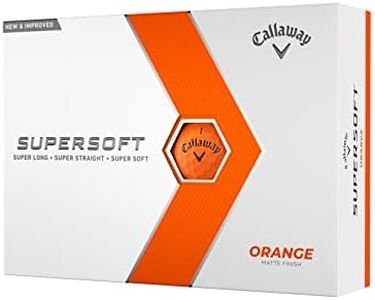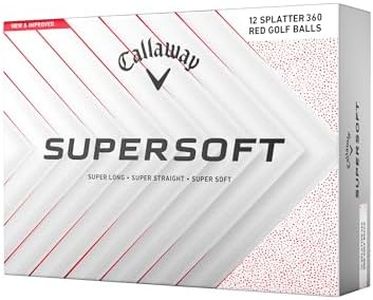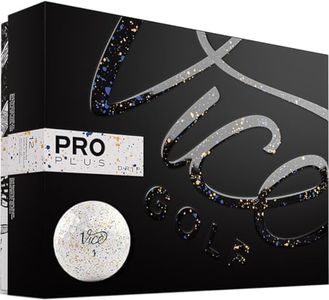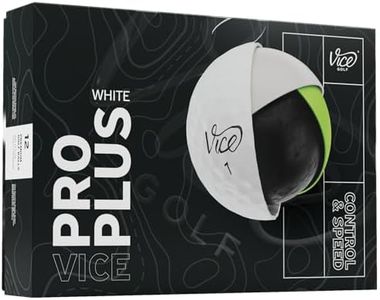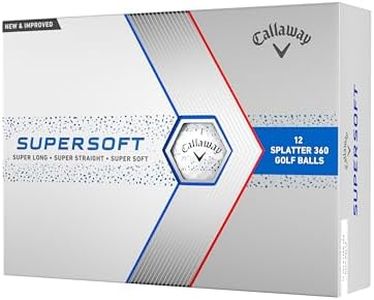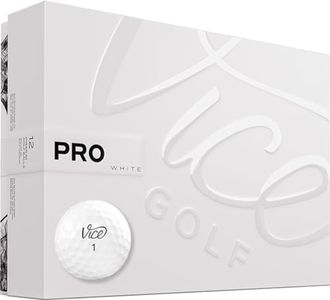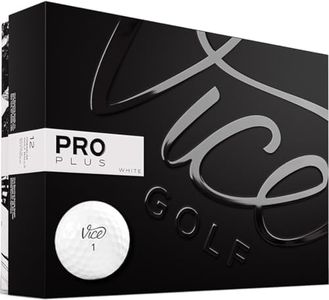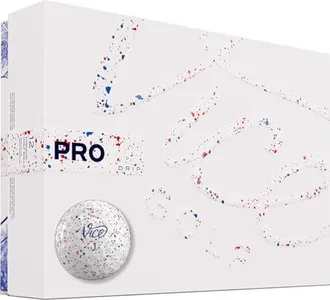We Use CookiesWe use cookies to enhance the security, performance,
functionality and for analytical and promotional activities. By continuing to browse this site you
are agreeing to our privacy policy
10 Best Distance Golf Balls
From leading brands and best sellers available on the web.Buying Guide for the Best Distance Golf Balls
When you're looking for distance golf balls, your main goal is to get the most out of your shots, especially when it comes to how far the ball travels down the fairway. The right distance ball can help lower your scores, boost your confidence, and make your rounds more enjoyable. Picking the right golf ball may seem tricky at first, but by understanding some key specifications, you’ll be able to find a ball that matches your swing and playing style.CompressionCompression is a measure of how much the golf ball deforms when struck. It affects how the energy from your swing is transferred to the ball. Low-compression balls (usually below 70) are softer and compress more easily, making them ideal for players with slower swing speeds who want to maximize distance. Medium compression (around 70-90) works well for average swingers, while high-compression balls (above 90) suit players with faster swings, as they require more force to compress. To choose the right one, think about your swing speed—if you're a beginner or don't swing very fast, a lower compression ball will likely help you gain more distance.
Cover MaterialThe cover material of a golf ball affects feel, durability, and spin. For distance balls, the most common cover is Surlyn, a type of ionomer resin, which is tougher and produces less spin, helping shots fly straighter and longer. Urethane covers are softer and provide more spin, mainly favored by advanced players seeking more control rather than pure distance. If distance is your top priority and you don’t mind a firmer feel, opt for a Surlyn cover ball.
Dimple PatternDimples on a golf ball control how it flies through the air. More dimples or special patterns can reduce drag and help the ball fly farther by keeping it airborne longer. There’s no perfect dimple count, but balls designed specifically for distance often have patterns that optimize lift for longer carry. If you want more distance, stick with balls that highlight their dimple design as a feature for greater carry and reduced drag.
Construction (Layers)Golf balls are made with different numbers of layers—most distance balls have two-piece construction, meaning they have a solid core and a durable cover. This simple structure is made to maximize energy transfer and help the ball go farther. More advanced multi-layer balls offer more feel and spin, which isn’t as important if your main focus is distance. Choose a two-piece ball if you’re focused strictly on hitting longer shots.
Spin RateSpin rate affects how much the ball curves in the air and stops after landing. For distance, you want a ball with a lower spin rate because it reduces sidespin and helps the ball fly straighter and farther. High-spin balls are better for control but not typically for distance. If you tend to hit slices or hooks, or want to maximize straight shots, select a low-spin distance ball.
